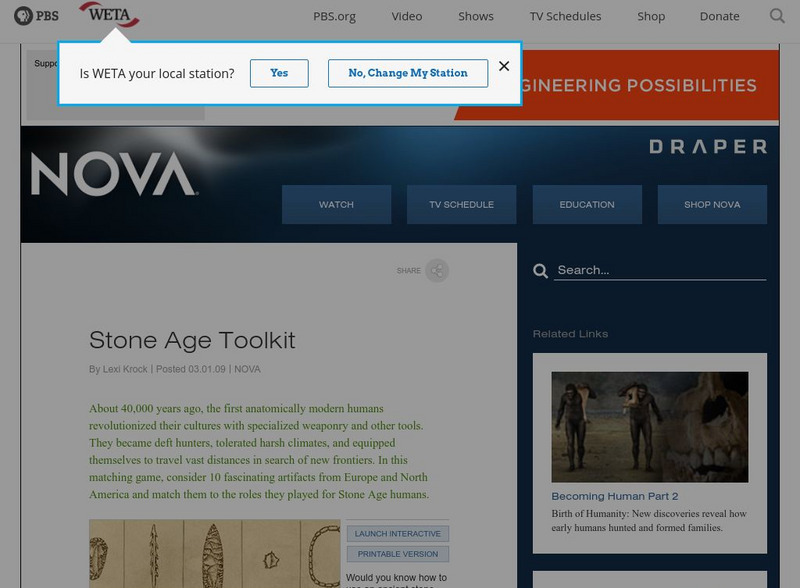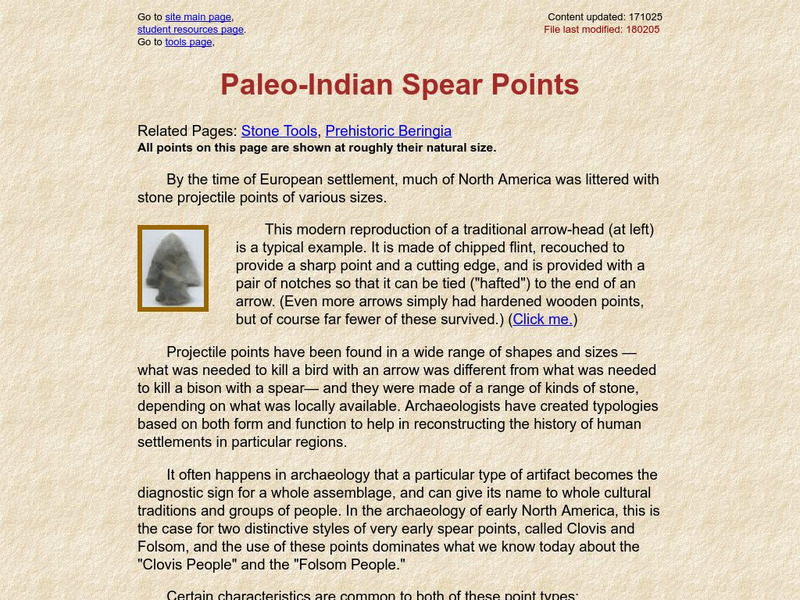Curated OER
National Park Service: Southeastern Prehistory: Paleoindian Period
Paleoindians were great wanderers, traveling across the continent to the southeast. Read about the archaeological findings that give clues about their culture there. Be sure to click on the information on carbon dating to help understand...
Curated OER
National Park Service: Archaeology Program: The Earliest Americans Theme Study
This exhaustive study of Paleo-Indians examines many of the sites where evidence of their occupation is found across the North American continent. This National Park Service study looks at evidence in found in projectile points,...
Texas A&M University
Csfa: Circum Pacific Research by the Csfa
Center for the Study of the First Americans at Texas A & M University is researching many different sites across North America looking in to theories of "Clovis First" and "Pre-Clovis" as to who were the first people to inhabit North...
Other
Mississippi Valley Archaeolgy Center: Common Projectile Points
This scholarly work describes the various projectile points used by Paleo-Indians and later cultures in the Upper Mississippi Valley. Find diagrams, photographs, and descriptions of the points, and compare their differences and...
PBS
Nova: America's Stone Age Explorers: The Fenn Cache
A close-up look at ten beautiful Clovis points made from several different materials found in what is known as the Fenn Cache.
PBS
Nova: America's Stone Age Explorers: Stone Age Tool Kit
Try your hand at identifying the uses of several stone age tools with this game from NOVA. Find out about each one and marvel at the specialization the Paleoindian was capable of.
University of California
Basic Stone Tools: Paleo Indian Spear Points
See a comparison of several different spear points made by the earliest Americans over a period of 4,000 years. The spear points had many similarities. The differences seem to be related to the game being hunted.
University of Iowa
Iowa Office of the State Archaeologist: Early Paleoindian Period
Clovis and Folsom projectile points tell archaeologists a lot about the distribution of Paleoindians across North America. Read about these points, how they were made, and where these points were found in Iowa.
Missouri State University
Missouri State University: Center for Archaeological Research: Big Eddy
Narrative emphasizes the importance of Big Eddy site. Artifacts of at least three and as many as five Paleoindian cultures are represented.
University of Missouri
Museum of Anthropology: Paleoindian Archaeology: Clovis Stone Tools
Find a good description of how Clovis projectile points were made. Included is a good comparison between Clovis, Folsom, and Dalton points. See photographs of several Clovis points found in western North America.
Khan Academy
Khan Academy: Native American Culture of the Plains
Indigenous people on the Plains farmed and hunted, living both nomadically and in established villages. Read more about their culture in this article.
Other
Live Science: First American Settlers Not Who We Thought
This article discusses findings that point to a pre-Clovis, New-World-humans model through artifacts dug up at various archaeological spots thoughout the Americas.









